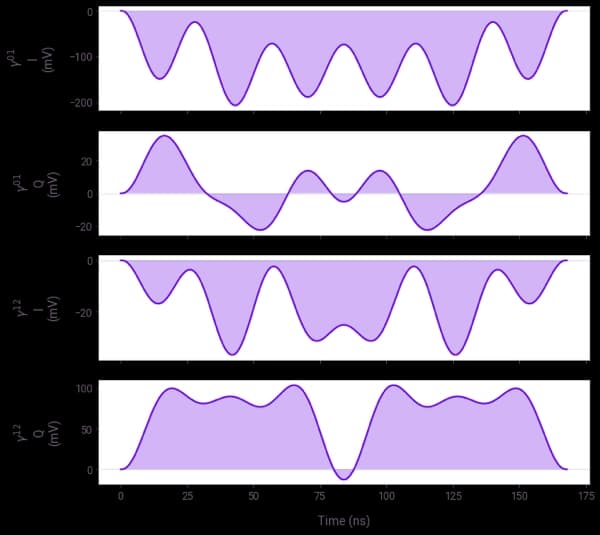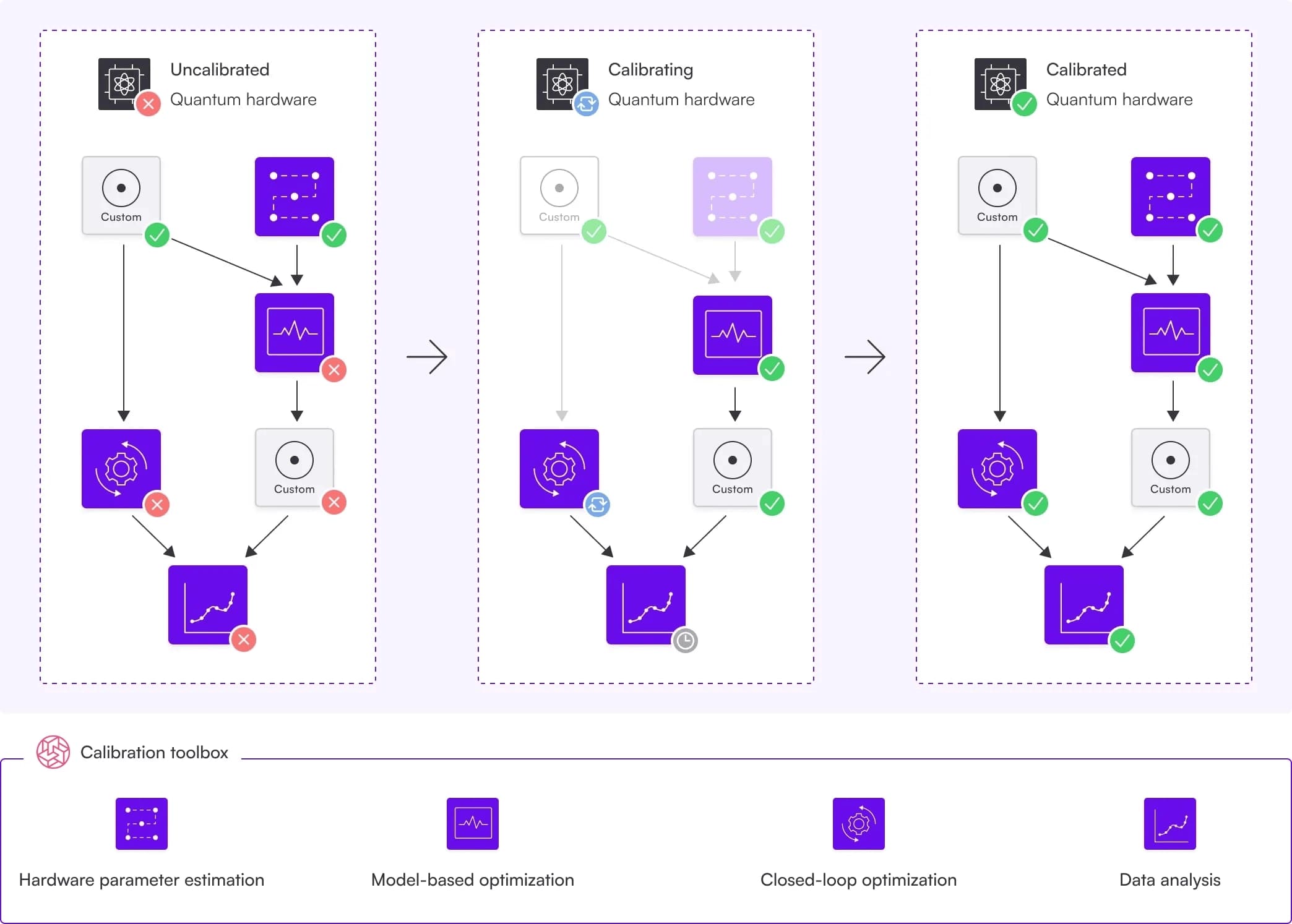Automate quantum experiments with AI
An overview of how Boulder Opal's AI tools can be used to automate the tune-up and optimization of quantum hardware systems
The key to scaling up the size and functionality of quantum hardware is the introduction of AI tools for hardware automation.
As qubit counts or the complexity of quantum physics experiments grow, the number of available control knobs that must be optimized grows immensely. Worse, the available controls in the system—whether they correspond to the parameters of laser fields, microwave pulses, or classical electrostatic voltages—are often nonlinearly coupled to the quantum system and to each other. Manual tune-up rapidly becomes impossible.
To tackle these problems you can leverage powerful AI automation tools based on closed-loop hardware feedback. Simply put, an AI agent can connect directly to your hardware system and autonomously tune up a complex suite of experimental parameters. Through iterative interaction with the experiment, the AI agent can optimize whichever system parameters are of interest to you.

And because the agents can be efficiently parallelized it's possible to apply these tools across large scale devices and systems. For instance, you can see how we used these tools to automate the performance optimization of commercial quantum computers and deliver an improvement of up to 9000 times in the performance of real quantum algorithms.
Boulder Opal's AI automation tools are comprehensive and highly flexible. So long as your measurement procedure is appropriately designed, this approach can deliver useful outputs across a wide range of applications. You can also choose from a wide range of pretuned AI agents in Boulder Opal, depending on the type of problem you're attempting to solve. Code-based implementation details are available in the How to automate closed-loop hardware optimization user guide.
You can get a high-level overview of Boulder Opal's AI-based automated optimization engines from our Automated closed-loop hardware optimization webinar.
AI-based quantum gate design
A key challenge in quantum computing is the design of quantum logic operations when system parameters are unknown—and often unknowable. For instance, a modulated pulse of microwaves used to implement a quantum logic operation may suffer distortions that occur due to transmission into a dilution refrigerator. Sometimes these distortions arise from temperature-dependent phenomena which are exceptionally difficult to characterize using conventional methods.
Fortunately, you don't need to know these details as the experimental operator—your devices possess all the knowledge necessary! Using direct measurements on one or more qubits, you can set an AI agent to design a totally new control waveform which implements the same quantum logic gate with optimal fidelity. It doesn't matter how the starting solution defined by the optimizer is distorted or modified on its way to enacting a quantum logic gates—the AI agent discovers this translation for you!
One example of this is an experimental demonstration with Lawrence Livermore National Labs where we applied our AI agents to autonomously design a complex "SWAP" operation on a qutrit—a three-level quantum system. There we demonstrated how you can employ band-limited smoothing splines to efficiently implement complex waveforms on multiple drive frequencies that are easy to output and parameterize from hardware signal generators. You can learn more about this work in the Demonstrating SU(3) gates on superconducting hardware application note.

AI-based classical-hardware tune-up for quantum system optimization
Q-CTRL's research team and our partners have used AI-enhanced automation to tackle a number of challenges in the tune-up and manipulation of quantum experiments. In many cases this involves manipulating classical parts of an experiment in order to deliver maximum performance.
For instance, you can use a closed-loop optimization engine to tune up the parameters of a proportional-integral-derivative (PID) controller used to stabilize a laser or other hardware system. Normally, you'd attack this using one of a set of engineering heuristics, but an AI agent can replace this process and automate the PID tune-up, even starting far from a stability region.
You can also perform autonomous closed-loop calibrations of various parts of an experimental control system. For instance, in order to implement almost any quantum logic gate with high fidelity you'll need to calibrate the radio frequency (RF) control signals used to drive modulators or create baseband control envelopes. You can see how an AI agent can replace tedious "scripted" calibration routines used to balance and optimize an IQ mixer, reducing measurement overhead by around 10 times in the How to automate calibration of control hardware user guide. This approach has proven equally useful in fine-tuning RF pulse amplitudes and phases in direct digital synthesizers.
Finally, you can see how members of our team applied AI-driven closed-loop optimization to improve the loading and optical depth of Bose–Einsten condensates in the technical literature Wigley et al. and Tranter et al..
Experiment scheduling
A series of Boulder Opal experiments can be orchestrated in sequence to autonomously bring up a large, interacting multi-qubit system from scratch. This requires a scheduler to abstract the specific hardware tasks in each step into a graph framework, including how and when each interrelated process should be executed, and what happens when something goes wrong. The Boulder Opal functions are easily programmed into your scheduler of choice, for a DIY approach.
In addition, Q-CTRL offers Boulder Opal Scale Up, a full-service approach to automation. Your organization can work with our control experts to design and integrate high-performance automation routines into your workflow. Reach out to us on the above website to learn more.

Convenient integrations
As always, Boulder Opal is designed to accelerate your research by integrating directly with your numerical packages, experimental control systems, and even your classical electronics. To help you out we've built two convenient integrations that can make it even easier to automate your system with AI.
For example, Boulder Opal easily integrates with multiple software packages and hardware vendors in the quantum ecosystem, meaning that you can reduce computational latencies and waveform synthesis used in generating test solutions for closed-loop optimization. Read more about our integrations in the Q-CTRL integrations page.
